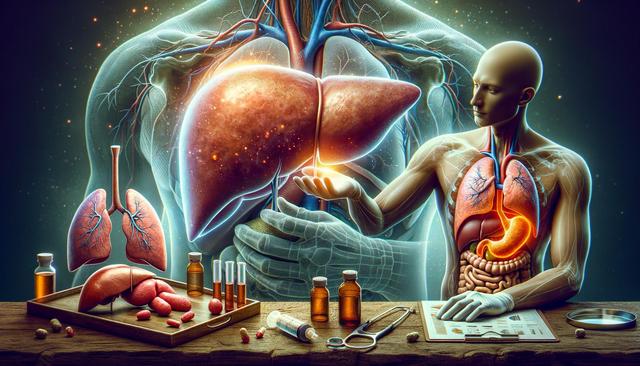Understanding Fatty Liver and Why It Matters
Fatty liver disease, also known as hepatic steatosis, occurs when excess fat builds up in the liver. This condition can be either alcohol-related or non-alcoholic (NAFLD), with the non-alcoholic form being more common and often related to diet, obesity, and metabolic health. While fatty liver may not cause symptoms in its early stages, it can progress to more serious conditions like liver fibrosis, cirrhosis, or liver failure if left untreated. Recognizing the importance of early management through diet and lifestyle is key to halting or even reversing the condition.
One of the most significant factors in treating fatty liver is identifying and avoiding foods that contribute to fat accumulation in liver cells. Along with regular exercise and weight management, dietary choices play a central role in improving liver function and overall metabolic health. Understanding what to eat and, just as importantly, what to avoid is essential in any effective fat liver treatment approach.
What Foods to Avoid to Reverse Fatty Liver
To support liver health and reduce fat buildup, it is crucial to eliminate or significantly reduce certain foods that are known to exacerbate fatty liver disease. These foods increase inflammation, insulin resistance, and fat accumulation in the liver. Here’s a list of foods to avoid:
- Sugary beverages such as soda, sweetened teas, and fruit juices
- Refined carbohydrates like white bread, pasta, and pastries
- Fried foods and fast food meals high in saturated fats
- Processed meats such as sausages, bacon, and deli meats
- Alcohol, which directly contributes to liver damage even in small amounts
Reducing or cutting out these items from your daily intake can help decrease liver fat and inflammation. Instead, focus on a diet rich in vegetables, lean proteins, and healthy fats like those found in nuts and olive oil. Whole grains and low-glycemic fruits can also support liver recovery when consumed in moderation.
Beneficial Lifestyle Changes for Liver Health
Beyond diet, lifestyle changes enhance the body’s ability to process fat and reduce liver inflammation. Regular physical activity is one of the most effective methods to improve insulin sensitivity and reduce liver fat. Aiming for at least 150 minutes of moderate exercise per week, such as brisk walking, swimming, or cycling, can yield significant improvements in liver function over time.
Another important aspect is maintaining a healthy weight. Gradual weight loss, even by 5–10% of your total body weight, can lead to measurable reductions in liver fat. Crash diets or extreme fasting should be avoided, as they can worsen liver stress. Additionally, managing stress through mindfulness practices, adequate sleep, and avoiding smoking are all supportive of liver health.
Regular check-ups with a healthcare provider are also recommended to monitor liver function through blood tests and imaging, helping to track progress and make necessary adjustments to your treatment plan.
Nutritional Strategies That Support Liver Recovery
Incorporating specific nutrients into your daily meals can further support liver healing and fat reduction. A diet based on whole foods, particularly those with anti-inflammatory and antioxidant properties, is beneficial. Here are some examples of liver-friendly foods:
- Leafy greens like spinach and kale, which contain chlorophyll and antioxidants
- Fatty fish such as salmon and sardines, rich in omega-3 fatty acids
- Legumes including lentils and chickpeas for fiber and plant-based protein
- Avocados, which provide healthy monounsaturated fats
- Green tea, known for its catechins that support liver function
These foods not only nourish the body but also help reduce inflammation and oxidative stress in the liver. It’s important to avoid high-calorie processed snacks, and instead plan balanced meals that include a variety of colorful vegetables, lean proteins, and complex carbohydrates. Drinking plenty of water and limiting sodium intake can also prevent fluid retention and assist liver function.
Building a Sustainable Fatty Liver Treatment Plan
Reversing fatty liver is not about finding a quick fix, but rather creating a sustainable routine that promotes long-term health. Consistency is essential. Begin by making small, manageable changes to your eating habits and daily routine. This might mean cooking more meals at home, reading nutrition labels, or setting regular times for physical activity.
Support from family, friends, or a registered dietitian can also make the transition smoother and more effective. Tracking your progress through journaling or mobile health apps can help maintain motivation and identify patterns that need adjustment. For those with underlying conditions like type 2 diabetes or high cholesterol, managing those conditions is also critical to improving liver health.
Medication may be prescribed in some cases, particularly for individuals with advanced liver disease or additional metabolic risk factors. However, lifestyle and dietary changes remain the cornerstone of treatment. As research continues to evolve, staying informed and proactive can significantly improve outcomes.
Conclusion: Taking Charge of Your Liver Health
Fatty liver disease is a manageable condition when addressed early with the right combination of dietary awareness, physical activity, and lifestyle changes. Avoiding harmful foods, adopting liver-supportive nutrition, and committing to consistent habits can lead to meaningful improvements in liver function and overall well-being. For those navigating fatty liver treatment, the journey may require patience and persistence, but the benefits of a healthier liver are well worth the effort.

Leave a Reply